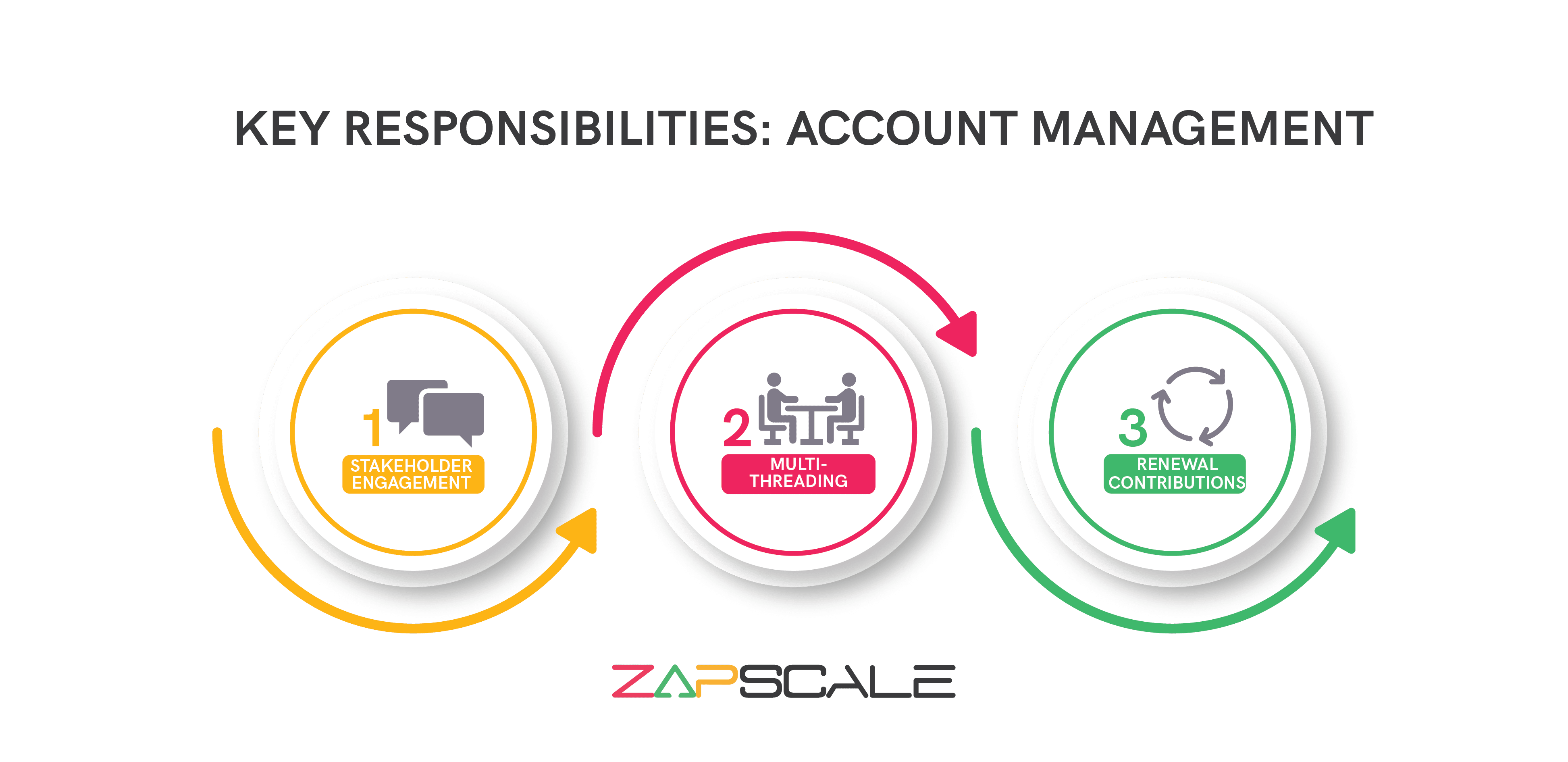CATEGORY > Customer Success Management
Customer Success vs. Account Management: What's the difference?

Account Management & Customer Success Management, these terms are often used interchangeably, which blurs their distinction and so as a CS thought leader, it is important for you to understand the difference between the two. Account management involves overseeing the customer relationship to ensure smooth interactions and address immediate needs. Customer Success, on the other hand, has a strategic focus. It involves understanding the customer's overall journey, to align it with their goals and drive continuous value.
In an organization where the Sales function is evolved, there are usually pods that include an AE (Account Executive), a CSM(Customer Success Manager) & an AM(Account Manager) all of whom work together to achieve the end objective - keep the customer happy and maintain the relationship for the longest tenure possible.
Let’s look at this in detail by understanding what each function and individual does.
Customer Success (CS) and Account Management (AM) play distinct but complementary roles in ensuring customer satisfaction, customer retention, and maximizing the value delivered to the customer. As I like to say, a win-win for all 🙂
What is Customer Success?
The ultimate guide to Customer Success Management covers in detail the nuances of what CS really is. But to share a quick recap, Customer Success, simply put, is connecting with your customer after a purchase is made and making sure they don’t feel the buyer’s remorse.
It is a promise (a promise that is bought) which is then brought to life. It's not just about selling a product or service; it's about guiding customers on a journey toward achieving their goals while ensuring they have a desirable experience. It’s quite similar to having a personal guide on your vacation who makes sure you not only reach your destination but also have a great time along the way.
What is Account Management?
Account Management, on the other hand, is the fact that you reach out to the same personal guide for your next vacation. The impact of Account Management is directly reflected in monetary value. Account Management is focused on a set of high-yielding accounts that could benefit from a personalized touch.
We’ll look at an example shortly under the section on what an Account Manager does.
What does a Customer Success Manager & an Account Manager do?
The focus of a Customer Success Manager is more strategic while having a monetary impact, eventually through customer retention. An Account Manager's focus is primarily financial while having a strategic impact through the course of the interactions.
How to CSMs and AMs achieve their objectives?
A CSM would focus on tasks like customer onboarding, training, product adoption and finally building your product advocates.
An AM would identify the stakeholders and decision-makers and multi-thread an account by setting up meetings to understand opportunities for cross-selling and upselling and contribute to renewals along with the CSM.
Difference Between Customer Success Management And Account Management
To summarise the distinction between the two let’s look at the focus areas of each function and the key responsibilities of the individuals:
Customer Success (CS)
1. Focus
- Strategic Orientation: Customer success has a strategic focus on the customer's overall journey. It involves understanding the customer's goals and aligning their experience with the product or service to drive continuous value.
- Long-term Relationship: CS aims to foster long-term relationships by guiding customers through their journey and ensuring they achieve success with the product or service.
- Preventing Buyer's Remorse: CS seeks to connect with customers post-purchase, ensuring they do not experience buyer's remorse by actively supporting them and making the customers into their loyal advocates.
2. Key Responsibilities

- Onboarding: Helping customers get started with the product or service smoothly.
- Training: Providing necessary training and resources for effective product usage.
- Adoption: Ensuring customers fully adopt and utilize the features and capabilities.
- Advocacy: Building product advocates by delivering exceptional experiences.
Account Management (AM)
1. Focus
- Financial Value: AM is directly linked to the monetary impact on the organization. It is concerned with managing a set of high-yielding accounts that can benefit from personalized attention.
- Revenue Growth: AM focuses on identifying opportunities for cross-selling and up-selling, contributing to revenue growth.
- Renewals: AM plays a crucial role in contributing to the renewal process, ensuring continued business with existing clients.
2. Key Responsibilities

- Stakeholder Engagement: Identifying key stakeholders and decision-makers within an account.
- Multi-threading: Setting up meetings to understand opportunities for cross-selling and up-selling.
- Renewal Contributions: Collaborating with customer success to contribute to renewal discussions by providing insights from being in touch with various stakeholders.
Let's illustrate this with a numerical example:
- Consider a software company with 100 key accounts. The AM, focused on financial impact, identifies opportunities for cross-selling and upselling.
- Suppose the AM successfully upsells additional features to 20% of these accounts, contributing to a 15% increase in average revenue per account (ARPA).
- This results in a direct monetary impact, generating an extra $300,000 in revenue. Simultaneously, the CSM, strategically nurturing customer relationships, ensures a 10% increase in retention rates.
- This enhanced customer retention leads to a reduced churn rate, preserving an additional $150,000 in annual recurring revenue (ARR).
- Now, when both the AM's upsell revenue and the CSM's retention-driven revenue are combined, the overall impact on the company's financial health is a substantial $450,000.
At the end of it all, if I had to say why or rather how both AM and CSM go in tandem with each other, there is only one factor that drives them both - customer relationship longevity.
ABOUT THE AUTHOR
Popular from Customer Success Management
Quality Content,
Straight To Your Inbox!
Subscribe for the latest blogs, podcasts, webinars, and events!

Write a Blog
If you have experience in CS and
a flair for writing, we’d love to
feature you.
Write to us on
hello@zapscale.com





